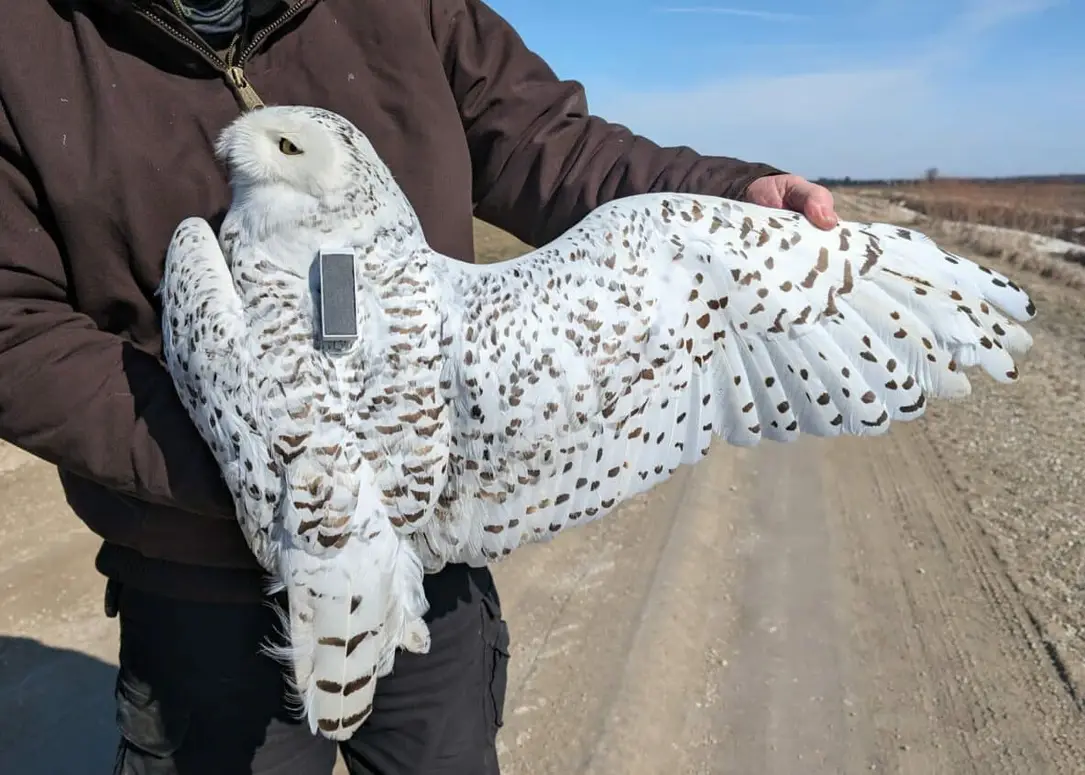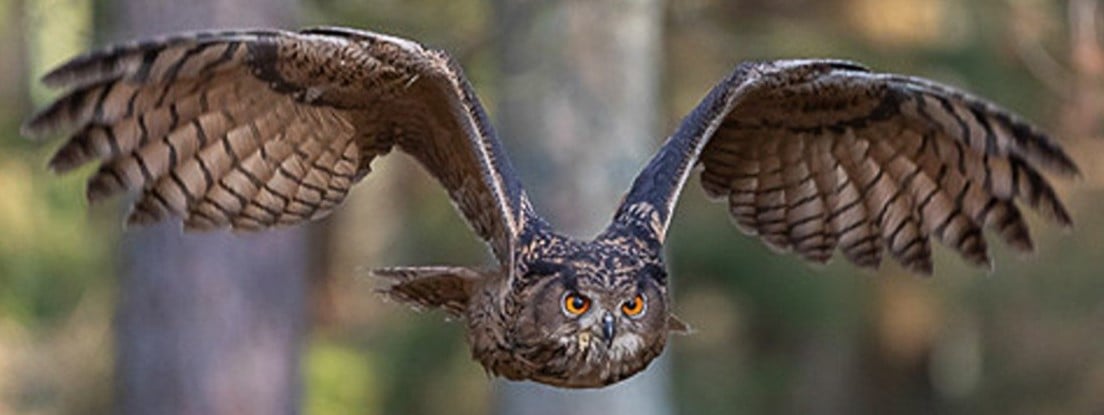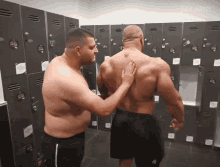From Elaine Kindler
If you ever come across a snowy owl with a transmitter, it was placed by Project Snowstorm This image was taken by researchers after placing a transmitter,releasing or relocating. The owls behavior is not altered in any way wearing the transmitter.
Image credit: Project Snowstorm
Project Snowstorm seems to have an extensive website that I'll have to check out further. Here is a summary about some of what they do in regard to the photo:
One of the most important elements of our research is understanding the winter ecology of snowy owls, using GPS/GSM transmitters that record the bird's location, altitude and flight speed as frequently as every six seconds. On-board temperature sensors and accelerometers add additional layers of data to help us understand how these birds hunt, migrate and survive both here on their more southerly wintering grounds, and in the Arctic.
In the past 11 years we've tracked more than 110 Snowy Owls from Alaska and the Dakotas to the Great Lakes, New England, southern Canada and the mid-Atlantic, including their summers in the Arctic. Our tracking data has documented previously unknown behavior, and shed light on poorly understood aspects of the snowy owl's life, both in their temperate wintering areas -- the main focus of our work -- as well as their breeding grounds in the North.
We continue to partner with Cellular Tracking Technologies, which supplies the high-tech, next-gen transmitters we use, and whose engineers and staff have been part of our team from the beginning.


